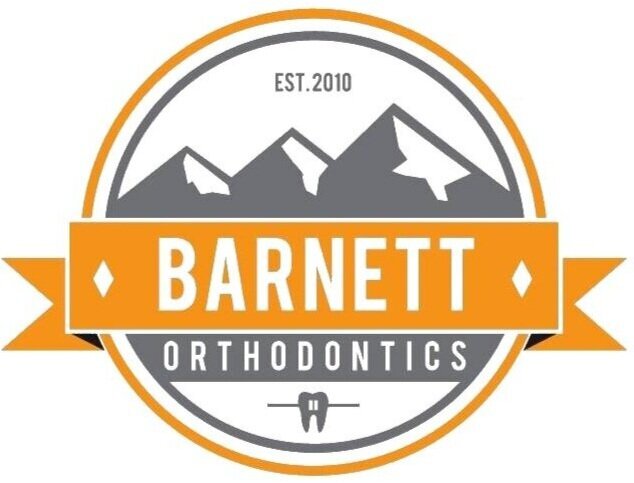
Your Treatment
Types of Braces
Self-Ligating Braces
We have braces that are available in both metal and clear materials. They have metal doors that act as a solid wall to help hold the wire in place, and have smooth rounded corners to help keep the inside of your cheeks and lips comfortable. The clear brackets are often chosen by patients who want their braces to be less visible.
Invisalign®
Invisalign® is a well-known product that isn’t braces, but in many cases can achieve the same results. It consists of a series of clear plastic aligners (trays) custom designed for each patient. They are typically switched out every two weeks to achieve gradual movement of individual teeth. Special impressions are taken at our office which are then sent to the Invisalign lab. They scan them into a computer, and with Dr. Barnett’s specific input into the case, these digital scans are used to fabricate the necessary number of aligners to coax the teeth into the final desired position. While they can’t do EVERYTHING braces can do, they are a great option in select cases, especially for people who want straight teeth, but really don’t want traditional braces.
video: Invisalign Intro
Types of Appliances
Carriere Motion Appliance
A great new appliance we are using is the Carriere Motion Appliance. Named after the orthodontist who invented it, Dr. Luis Carriere, it can actually be used to treat a large overjet (Class 2 bite) OR an underbite (Class 3 bite). It is used for a few months before braces or Invisalign are started, and can be used both in growing patients and adults.
As you can see in the video, it involves a metal (or clear!) bar attached to some back teeth, a single brace on a back molar, a clear Invisalign-style retainer, and an elastic. That's it! This handy appliance can do the bulk of the bite correction right at the start, and then braces/Invisalign can finish things off.
Way better than headgear, right? Check out the videos to see how it all works.
Invisalign Teen MAF
Select adolescent patients may be great candidates for the newest Invisalign Teen appliance, called the Invisalign Mandibular Advancement Feature (MAF). It works similar to the way a Herbst, MARA, or Twin Block appliance is used, but is all built-in to Invisalign aligners!
Xbow
Pronounced "Crossbow", this appliance is designed to help correct excessive overjet (when the upper front teeth protrude too far in front of the lower teeth), and is particularly useful in cases where the lower jaw is under-developed relative to the upper jaw. It was developed by Dr. Duncan Higgins, who practices in Delta, BC. It replaces more traditional appliances like head-gear.
Herbst
A Herbst appliance is similar to a Xbow appliance, but works slightly differently, as the lower jaw is held forward in an attempt to allow it to grow as far forward as possible. Dr. Barnett will select the appliance to best address your bite and smile.
Rapid Maxillary Expander
RME is an acronym for Rapid Maxillary Expander (the right and left maxilla are the two main bones that make up your upper jaw). It is also sometimes called an RPE (the “P” is for “palatal”, again relating to the upper jaw), or a “hyrax” (named after the type of screw used in the appliance). It is cemented onto the 6-year molars in the top jaw, and generally looks something like the picture to the right.
Reverse Pull Headgear
RPHG is short for “Reverse Pull Headgear”. While “regular” headgear has basically been replaced in our office by the Herbst and Xbow appliances, a “reverse” headgear is the only appliance of its kind. It is used as a last resort to treat an moderate-to-severely under-developed upper jaws, especially in younger children (usually age 8-10). If a child is around this age and has an underbite, they may benefit from this type of treatment.
Dr. Barnett doesn't recommend using a RPHG unless it is absolutely necessary, and it is different than the traditional "headgear" used commonly in the past....and no, Dr. Barnett will never make you wear it to school!
Anterior Bite Plate
An ABP (Anterior Bite Plate) is a removable appliance that goes in the upper jaw and is used to correct a “deep bite” (when the upper incisors overlap the lower incisors excessively). It is a “passive” appliance, in that it has no moving parts or springs pushing or pulling teeth, but uses the patient’s own muscle forces to help correct their bite.
Upper and Lower Holding Arches
UHA and LHA are acronyms for Upper and Lower Holding Arches, although sometimes you will also hear a UHA referred to as a TPA (Trans-Palatal Arch). They are cemented onto the corresponding 6-year molars, and are considered “passive” appliances in that they do not actively move teeth but rather hold the back and front teeth in their current positions in order to maintain existing space for eruption of a new permanent tooth. These can be used if a baby tooth comes out early, or as a retainer to hold space that has been “re-gained” via other orthodontic appliances.


